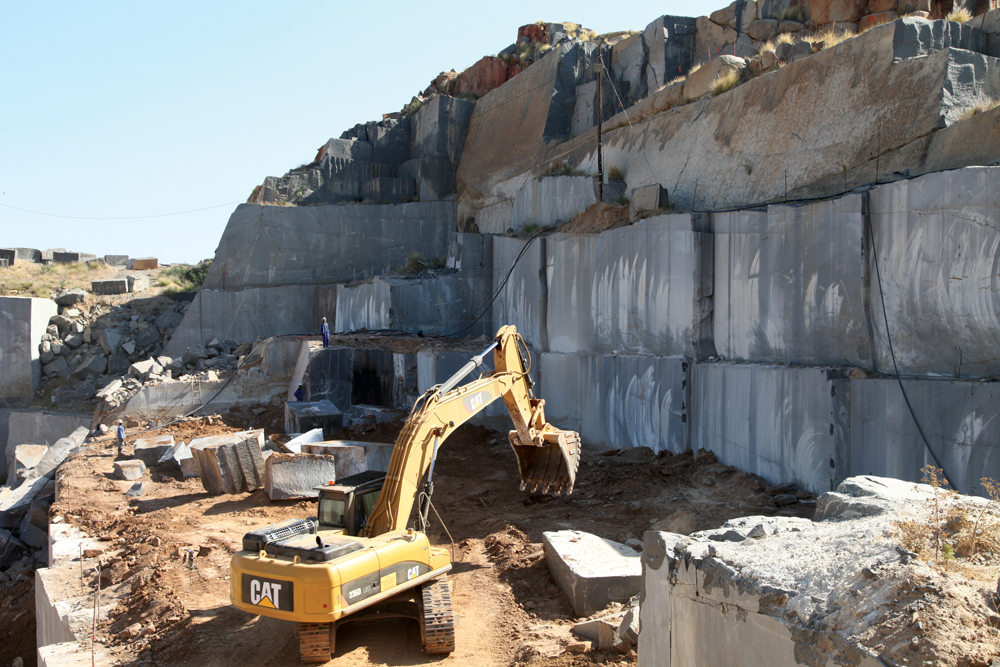A Journey Via Granite Quarries in South Africa: Unveiling Nature's Virtuosity
A Journey Via Granite Quarries in South Africa: Unveiling Nature's Virtuosity
Blog Article
Unearthing the Rich Background and Lasting Practices of Granite Quarrying
As we base on the precipice of discovering the complex tapestry of granite quarrying, a journey through time reveals not simply the physical act of extracting stone yet also the social and historical importance woven right into the really textile of this technique. From the ancient origins that laid the structure for modern quarrying techniques to the lasting practices that are shaping the future of this industry, each sculpt mark on granite surfaces informs a tale waiting to be discovered (granite quarries in south africa). The legacy of granite quarrying stretches far beyond simple removal; it is a testimony to human ingenuity, durability, and the enduring attraction of this stunning rock
Old Beginnings of Granite Quarrying
Going back to ancient human beings, the technique of quarrying granite has been an indispensable component of human history and building development. The earliest evidence of granite quarrying days back to old Egypt, where enormous pyramids and detailed sculptures were crafted from this resilient rock. The Egyptians utilized primitive devices to remove granite blocks from quarries, showcasing the value of this material in their monumental constructions.
Moving ahead in background, the Greeks also made significant contributions to the quarrying of granite. The Greeks made use of granite in numerous architectural marvels, such as temples and sculptures, showing their ability in shaping and sculpting this hardy stone. The Romans better improved the strategies of quarrying granite, utilizing innovative devices like blades and hammers to remove and form granite for their renowned frameworks.
With the centuries, the method of quarrying granite has evolved, with modern technologies enhancing effectiveness while preserving the classic charm of this natural rock - granite quarries in south africa. From ancient people to contemporary home builders, the tradition of granite quarrying proceeds to form our world
Advancement of Quarrying Methods
The evolution of quarrying methods has actually been marked by a constant progression towards higher performance and precision in drawing out granite. From the fundamental approaches utilized by our forefathers to the advanced innovations used in contemporary quarrying operations, the market has actually gone through substantial advancements. Early quarrying techniques involved hands-on labor with basic devices such as knives, hammers, and wedges to remove granite blocks from the earth. As worlds progressed, strategies like fire-setting and primitive nitroglycerins were presented to facilitate the extraction procedure.
In even more current times, the development of machinery changed the quarrying market, enabling quicker removal rates and raised performance. Technologies such as ruby cable saws, high-pressure water jets, and pneumatically-driven drills have become common in modern-day quarries, permitting accurate cutting and decreased waste. Advancements in computer-controlled equipment and 3D modeling have enhanced her comment is here quarrying procedures, leading to minimal environmental influence and boosted sustainability methods. As the demand for granite remains to rise, the development of quarrying techniques remains integral to meeting sector needs successfully and sustainably.
Social Importance of Granite
Granite holds browse this site an extensive social relevance throughout different people as a result of its enduring visibility in architectural masterpieces and admired monoliths. From the majestic pyramids of Egypt to the detailed makings of the Angkor Wat holy place in Cambodia, granite has actually been a product of choice for sharing splendour and long life in social heritage. In old Rome, granite columns embellished temples and public structures, representing stamina and permanence. The social significance of granite extends past its physical qualities; it symbolizes resilience, stability, and eternity, making it an icon of sustaining legacies and traditions.

Lasting Practices in Quarrying
Amidst the abundant history of granite quarrying and its cultural value lies an expanding emphasis on sustainable techniques within the industry. As ecological recognition and issues regarding source exhaustion have actually enhanced internationally, the quarrying industry has progressively embraced sustainable methods to lessen its influence on the setting and surrounding communities.

In addition, improvement and rehab of quarry websites post-extraction are essential to sustainable practices. By restoring quarried areas to a natural or useful state, such as producing wildlife habitats or recreational areas, quarriers can offset the ecological footprint of their procedures and add positively to the regional ecological community.
Tradition of Granite Quarrying
With a historical backdrop soaked in workmanship and industrial progress, what withstanding impact has granite quarrying left on the landscape of contemporary culture? The heritage of granite quarrying transcends mere removal practices; it has actually formed building marvels, city landscapes, and social heritage worldwide. The sturdy nature of granite has made it a recommended option for monuments, structures, and infrastructure, standing as a testimony to the ability and creativity of quarry employees throughout generations.
Additionally, the financial impact of granite quarrying can not be neglected. The market continues to give employment opportunities and drive neighborhood economies in regions where granite removal prevails. It has likewise stimulated technical developments in quarrying techniques and devices, leading to extra effective and lasting methods.
In terms of sustainability, the legacy of granite quarrying includes efforts to reduce ecological impacts via recovery jobs and accountable resource administration. By balancing economic rate of interests with environmental stewardship, the sector makes every effort to guarantee that future generations can continue to take advantage of this enduring natural deposit.
Final Thought

Report this page